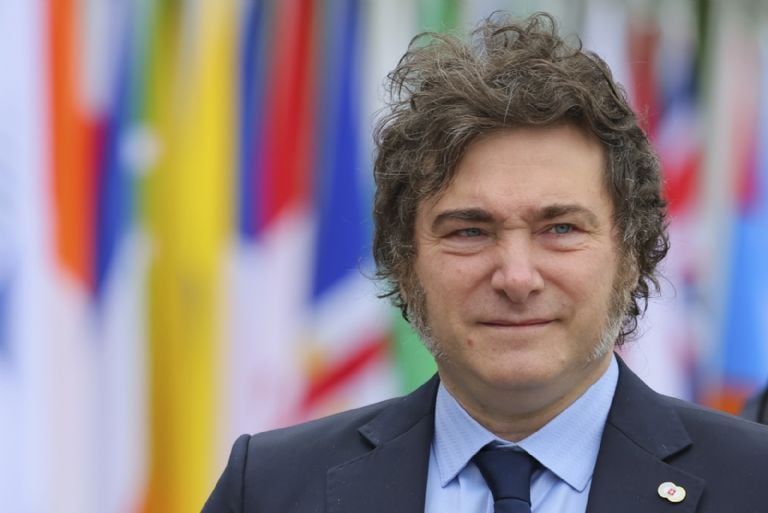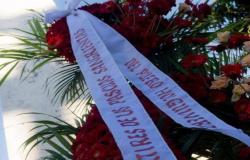Federico Sturzenegger has memory. His time in Mauricio Macri’s first cabinet as president of the Central Bank of the Argentine Republic (BCRA) left him many lessons. Not only economic, but also political. And among them, coexistence. Although his differences with Alfonso Prat Gay remained in memory, with that Minister of Economy things were finally in order due to an important key: both recognized each other as honest in intellectual disputes. Today both can have a friendly conversation, although, of course, without thinking about joining the same cabinet.
Things did not end so well with his successor at the BCRA: Luis “Toto” Caputo. For this reason, days after confirming his formal entry into the government of Javier Milei, Sturzenegger meets with several power figures (including the head of state) to finish designing what will be his powerful ministry in creation. But also for the president to be the one to make clear a fundamental question: where the limits of the powers between him and Caputo will be. Today, Milei’s next Cabinet colleagues have a formal to good relationship, but the intellectual creator of Bases I and Bases II knows that if each one’s dependencies are not formalized, there could be problems in the future.
Meanwhile, your clear and hard tasks would already be put together and confirmed by Milei. He will, obviously, be the one in charge of the reform of the State and the closure of public organizations that are not on the payroll of 33 agencies that will not be able to be ejected, according to the last negotiation that led to the approval of Bases II in the Senate. But also, Milei proposes to deliver to Sturzenegger more specific and direct tasks with the reforms that the head of state has in mind, such as carrying out future privatizations, labor reform and, fundamentally, implementing the Large Investment Incentive Regime (RIGI). And in terms of supervision over its progress, regulation and application, also advance with the chapters on pension and tax moratoriums, money laundering, monotax and self-employed reforms and changes in Earnings and Personal Assets, if the latter is endorsed by Deputies, after the changes introduced in the Senate.
In short, the former president of the Central Bank already knows that he will have in his portfolio, still unnamed, the execution of the content of the most important law of the entire first administration of the libertarian; and that it will be up to him (and no one else but him) to ensure that the reforms included in both reform packages become reality. And they are executed. Obviously in the company of other ministries and agencies, such as Economy, Human Capital, Interior, Justice, Defense, Foreign Relations; important ministries such as Infrastructure, Labor, Commerce and a significant handful of decentralized organizations.
Part of his tasks will be to speed up the regulations that depend on the Executive and implement a strict organizational chart so that the departments of all ministries, secretariats and various departments carry out the reforms as established by the portfolio that he would manage. Sturzenegger. And, furthermore, the application of the content of the Bases does not suffer modifications when the law is brought into real life.
In principle there will be two areas where the economist will have to get involved: privatizations and the reform of the State; two headlights that stop Milei They are his personal mark that he wants to leave in the history of his management. In the first case, and depending on the final list that remains (if Aerolíneas Argentinas, Correo Argentino and the public media are included, issues that are under negotiation in the Deputy), Sturzenegger He will have to act as editor and subsequent overseer of the bidding and concession processes of the companies that will be opened either for full sale or for temporary and partial authorization for the exploitation of private capital. According to what is being discussed in the Senate, and if Bases II is approved, his ministry should promote the privatization and concession processes of AySA; ENARSA, Intercargo, Belgrano Cargas; Railways (SOFSE) and Road Corridors. Also from Public Television and National Radio if they return to the original list in Deputies. It will also have under its control the private capital entry operations of Yacimientos Carboniferous de Río.
Regarding the reform of the State and the modifications in the national public administration, Sturzenegger must implement mergers and eliminations of departments in each ministry, with the explicit objective of complying with the maxim that the ministry itself Milei imposed on his management: that in three and a half years, when his term ends, the National State will have a reduction of between 30 and 40%. Not only in financing and fiscal adjustment funds, but also in distributions considered “unnecessary for its management.”
An important task entrusted by himself Milei will be to find cases like INADI, which should close or merge into other departments. In the same way, Sturzenegger You will have to prepare a comprehensive list of movable and immovable assets to be liquidated. The model is that of the ’90s, when, for example, the Argentine embassy in Tokyo, Japan was sold; in addition to countless buildings and land of all types and potential private demand that is considered dispensable.

As for the RIGI, it must supervise its regulations, internal regulation and speed of approval and execution of projects; task in which he will inevitably have to share some role with the Ministry of Economy. It is also here where Sturzenegger He wants the boundaries of each portfolio to be clear. The RIGI is the President’s great hope to show reactivation of the economy and show that his government’s platform is attractive for the arrival of risk capital. In addition to the classic oil, lithium, copper and the agricultural sector; the great hope of Milei about the RIGI is that investment bets arrive in road, energy, tourism, communications and transportation infrastructure; accelerating demands from all provinces in times of indefinite suspension of public works. According to the numbers that the President has in his head, Argentina would need no less than 40,000 million dollars in investments for the next three years; only in electricity, gas, routes and communications infrastructure.
Sturzenegger He will thus become one of the most powerful officials in the administration Milei. But also the most controlled day by day by the President himself who will want to see the realization of his reformist work on the real ground.








